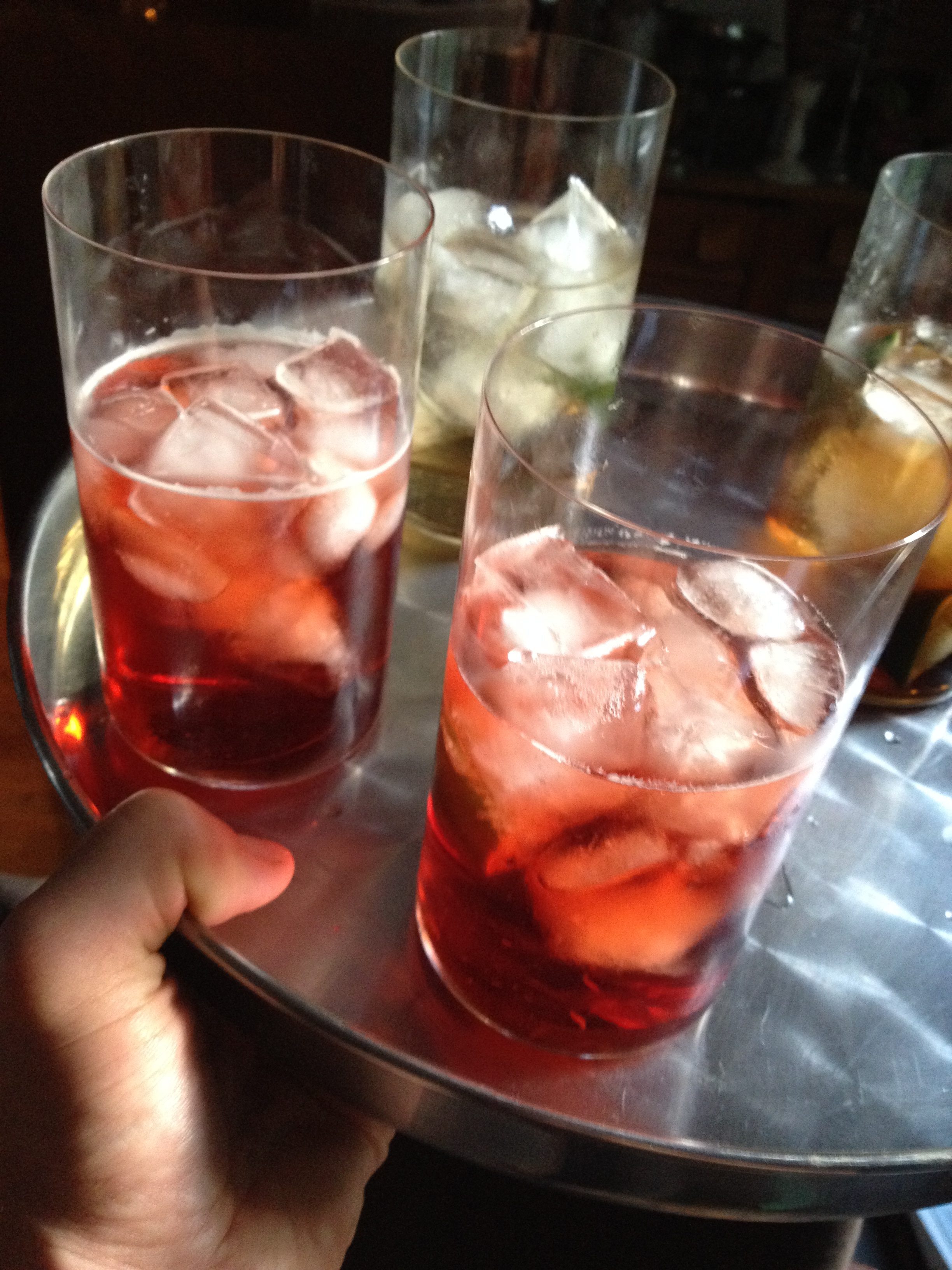
TL;DR? Just drink it.
My americano
- Ice cubes into a tall narrowish glass, be generous
- 1.5 ounces Campari
- 1.5 ounces sweet vermouth
- Few drops of cocktail bitters, less is more, Angostura’s orange is especially nice
- Stir
- Top with soda water to taste
- Garnish with an orange wheel or expressed lemon peel (optional)
- Stir very briefly (keep them bubbles)
There’s no scuba diving in sight for the immediate future. I had the opportunity to go dive in a quarry, in Mohawk territory, but my bad social planning skills intervened. So instead of glorious but cold ass underwater vistas, brace yourselves for a short series on…. you know it , drinks, and probably some random thoughts to go with that.
This week’s culprit? The americano, it used to be called a Torino-Milano, or a Milano-Torino, though sometimes that’s a completely different drink. Since people get into fights over these things I labelled the recipe above “my” americano, to avoid implying that I was in any way representing an ultimate cocktail truth. Also, please note that there are no cocktail bitters in the traditional recipe.
After looking into this drink’s simple (on the surface) history, I’m hedging my bets. A real history of this drink would require proper historical research, complete with a trip to Italy to review archives, diaries, letters, newspapers and old restaurant menus. I’m not sure National Geographic will give me a grant for that just yet, still, let’s get this tale rolling, I’ll do the best I can.

The main ingredient, the basis, the soul, the heart of the americano is Campari. Made with any other bitter it is a different drink, no matter how delicious. Please stop the fuckery, if you change one ingredient or even significantly alter the proportions in a drink, it is no longer that drink. No, I won’t be drawn into a Theseus’ ship discussion, that’s completely different and btw it is no longer his ship because a) there is nothing original left on it and b) he no longer uses it. Back to Campari, apparently it is an acquired taste. A much repeated and tired piece of lore, is that even Italians say you must try it three times before liking it, sort of like some of the weirder sexual practices I guess. I chuckle silently. I think it rocks the casbah, I mean the Campari of course.

My appreciation of this drink has nothing to do with ads suggesting group sex with Selma Hayek.
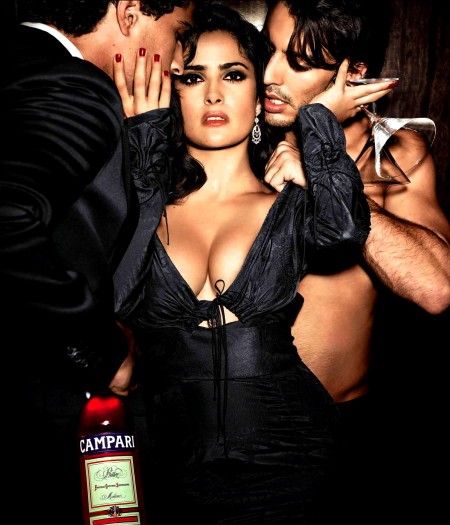
Or a belief that I have anything in common with Benicio Del Toro, except Campari of course.
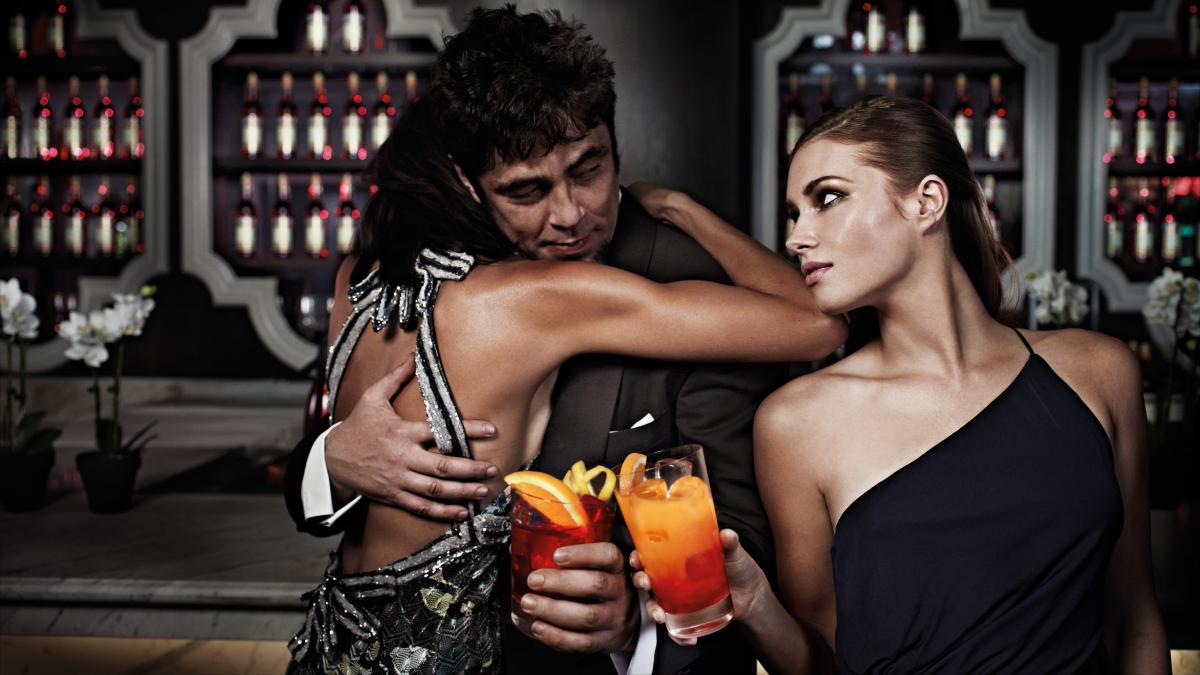
Though I seem to share a love of anvils with Penelope Cruz. Who knew?
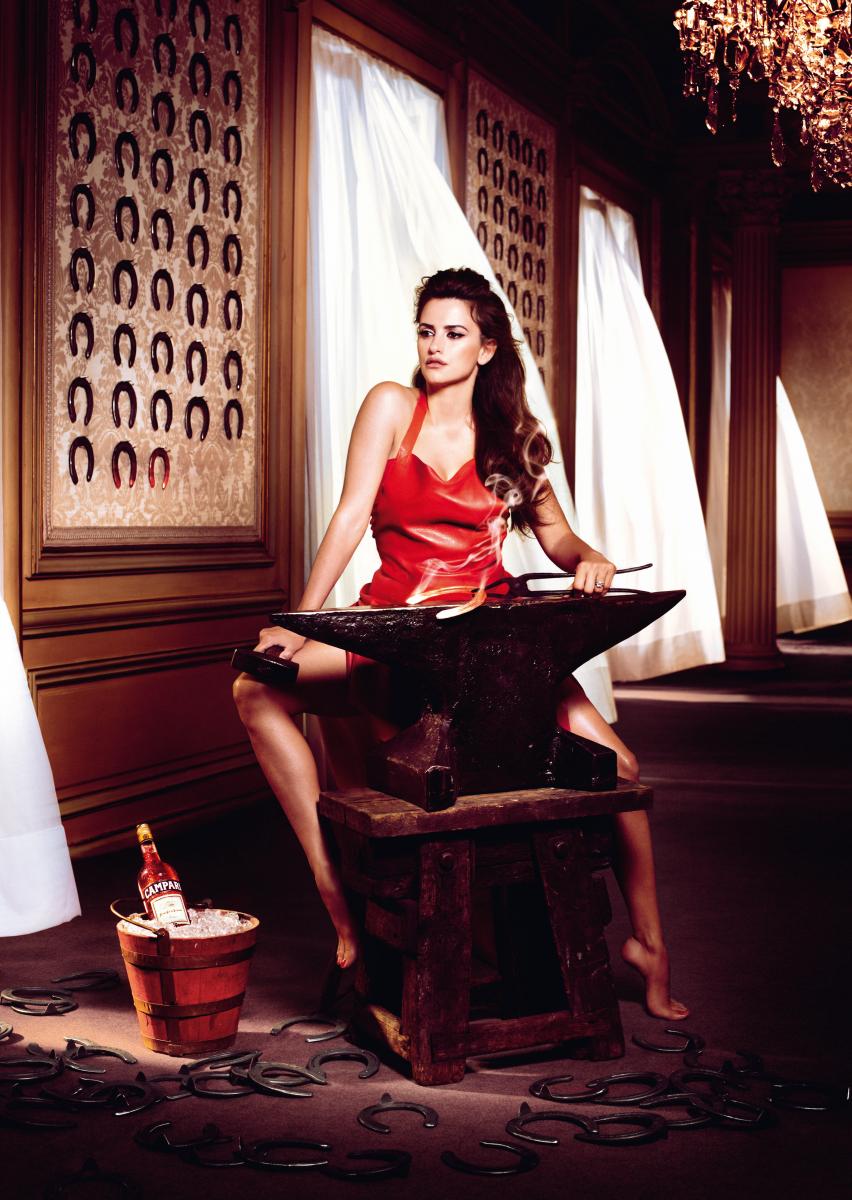
Obviously none of these pictures are mine. Sigh.
So Campari, vatizdat?
Campari is an alcoholic beverage, otherwise why bother, usually in the mid 20’s % A.B.V. depending on where it’s produced, and its birthplace is northern Italy circa 1860. Today the biggest markets for this bright red apéritif are Italy (no shit Sherlock), France, Germany and Brazil. My fondness for Brazilians seems to grow with each piece of info I glean about them. Anthony Bourdain famously said, I’m paraphrasing and out of contexting, that they either look like they just had sex or are going to have sex. Anyways, more on that some other time.
The late 19th century is an interesting time for the commerce of alcohol, I’m guessing that with the industrial revolution and the concomitant improvements in travel and transportation, a lot of local recipes went global. For example vermouth, which will play a part in our story in a little bit, is essentially wine, some more alcohol, and botanicals added for flavour. Mixing wine with botanicals or other ingredients is nothing new, far from it my little chickadees, it was the de rigueur way of drinking wine for the Greeks and the Romans, and if you read (as one does) anything about the archaeology of wine, it seems that it was the immemorial approach to getting a little tipsy in prehistory.
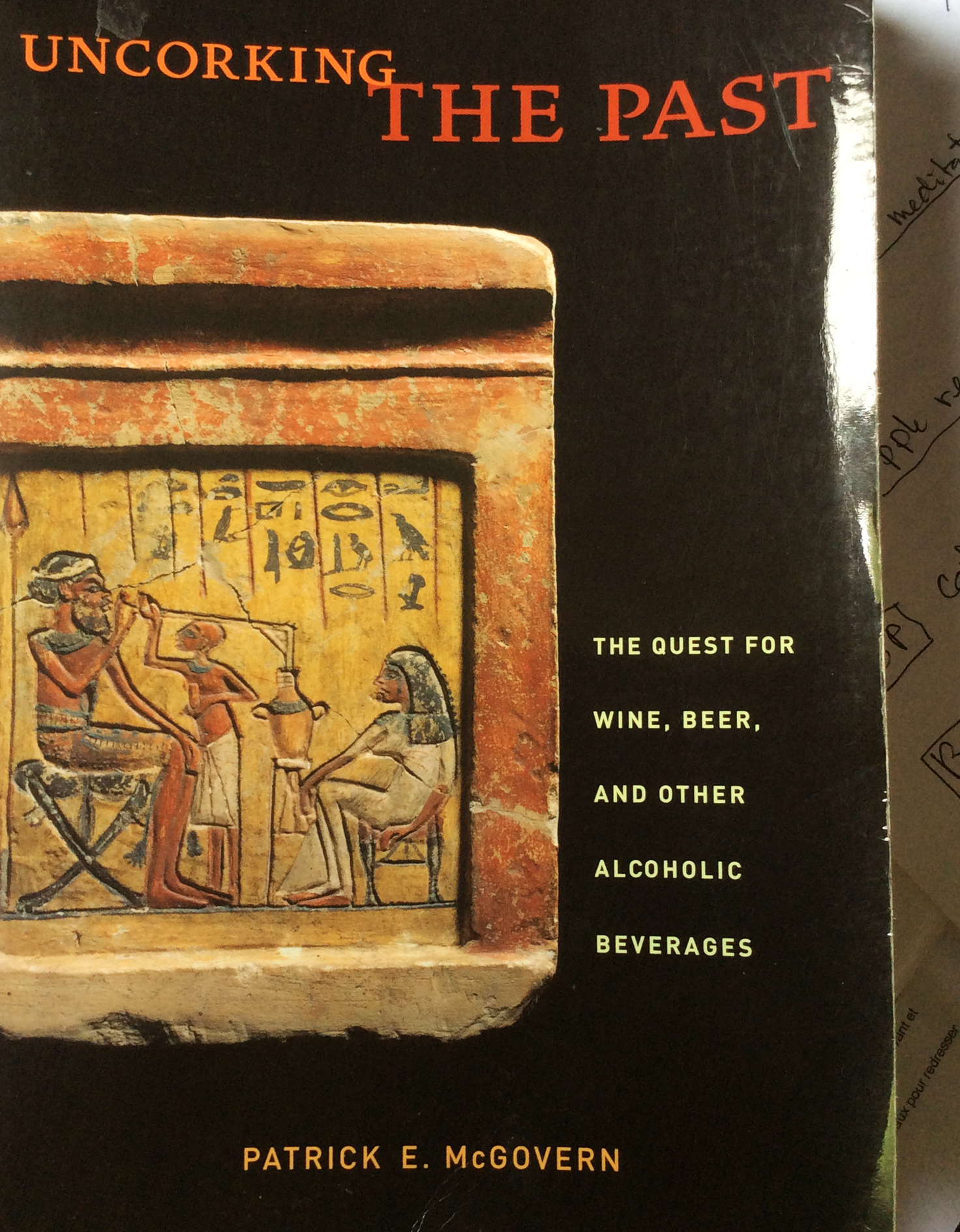
In fact, mixing your wine was so essential to the Graeco-Roman drinkskultur, that the barbarians, were defined in part by the fact they drank their wine straight. Ixnay on that. Sidebar, don’t let anyone tell you that the word barbarian comes from the fact that other proto-Europeans wore beards as opposed to Graeco-Romans. A) Graeco-Romans wore beards, just check out the statues of some emperors (google Marcus-Aurelius or Hadrian). B) It seems the term came from the sounds of the languages these people spoke, that to Greek or Latin speakers sounded like barr-barr-barr. Anyhoo, enough about that.

So the late 19th century sees a veritable explosion of flavoured fortified wines, that probably existed in similar forms as local drinks/medication for ever. It’s funny to note that for the longest time, still today if you ask my mother, herbs mixed with wine were used for various remedies, including I suspect the relief of dreariness and maybe making your third cousin more attractive (small villages, restricted communications, inbreeding, you know how that goes). I jest and digress. Most of these concoctions did not survive to the present day, changing tastes, bad business practices, all of that. Campari however is alive and kicking. It is interesting to note that Campari is owned by the Gruppo Campari, they have been traded on the Italian stock market since 2001, and rank as the world’s 6th beverage company (and getting bigger). 51% of the shares are owned by Alicros S.p.a., and in turn a discreet lady known only (to me) by her late husband’s family name Garavoglia, owns 60% of Alicros, which were gifted (apparently, I don’t want to sound like I have good info on any of this) to her husband by the last heir of the Campari family in 1982, as a reward for years of loyalty. Now that is some next level bonus. Her son Luca is Gruppo Campari’s chairman of the board. There you go.
As a tipple, Campari falls into the category of bitters, as opposed to say vermouths or aniseed drinks, and if you’ve ever tasted it you know why. That sweet bright red syrup of goodness is so bitter that it feels like it’s drying out the inside your mouth. It’s glorious and tasty. Few things to my mind herald summer like a Campari and soda. Not that this means much to most of us, but the taste of Campari comes in large part from the chinotto oranges and from cascarilla bark, on top of 60 or so other botanicals. The drink’s signature red colour used to come from what was basically crushed insects of the cochineal kind. I’m serious, but don’t be grossed out (or be), it’s pretty standard in the food industry in order to achieve that ruby red hue. Crushing the scales and treating them with chemicals makes carmine, which is used as a food colorant. The carminic acid, from which carmine is produced is actually a defense mechanism for the insects. Good to know. Campari stopped using carmine in 2006, and I have no clue how they colour their product nowadays. No, I do not know everything alcohol related, that’s just a nasty rumour started by people I have stumbled over.
Suddenly, I’m in a bit of a quandary, just for the sake of clarification, bitters can be an apéritif like Campari, but also a digestif, like say Fernet-Branca or Averna, in that case you would call it amaro, which is Italian for… bitter. Also, let’s not confuse the two with cocktail bitters, like Peychaud’s or Angostura, which are flavourings and not meant to be drunk on their own. Roughly, that’s it.
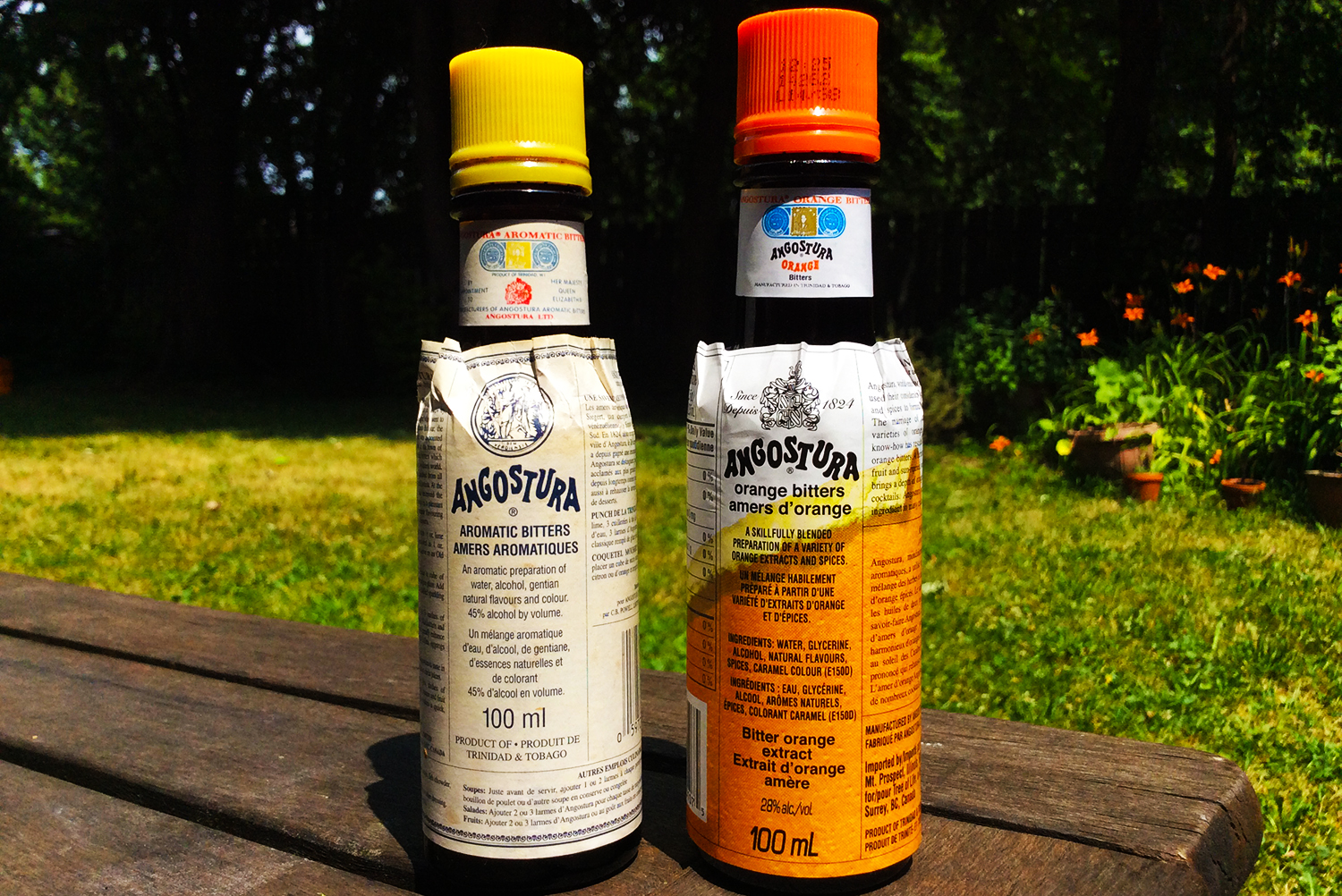
So Campari begins large scale production in 1904 in a town close to the city of Milano, sorry, Milan, before that (for about 40 years) you would get Campari at the Caffé Campari, owned by the original Mister Campari himself, Gaspare Campari. Apparently the drink’s first name was Bitter all’Uso d’Holanda, not as marketable if you ask me. Guess who is said to have hung about (later obviously since he was not a vampire) the caffé? Ernest Hemingway of course… So far we’ve met him in Paris, Key West and Cuba.
A quick note about vermouth. I mentioned earlier that wine mixed with herbs had ancient precedence, and in that recess of history we will find the origin of the word vermouth. Since antiquity wormwood, or artemisia absinthium, had been used in flavouring wine, the German called such a wine vermut, German for wormwood, which in French was pronounced (not spelled) “vermoutte”, and that gave the English vermouth. Why the French did not call this wine by their on word for wormwood is a bit of a mystery, I guess they must have been getting their vermut from Germany, otherwise we might well be drinking “armoise” today instead. However, that was liquid was likely dry vermouth. It is Antonio Carpano that makes popular (perhaps actually creates) the style of sweet vermouth in 1786 in Turin. It’s a hit, but it will have to wait almost a century before meeting future best buddy Campari. Remember that vermouth is essentially wine, so its best to keep it refrigerated if you’re planing to keep a bottle open for more than a few days. Also, there’s a lot of sweet vermouths out there, remember one of our drinkskultur rules and taste yo shit.
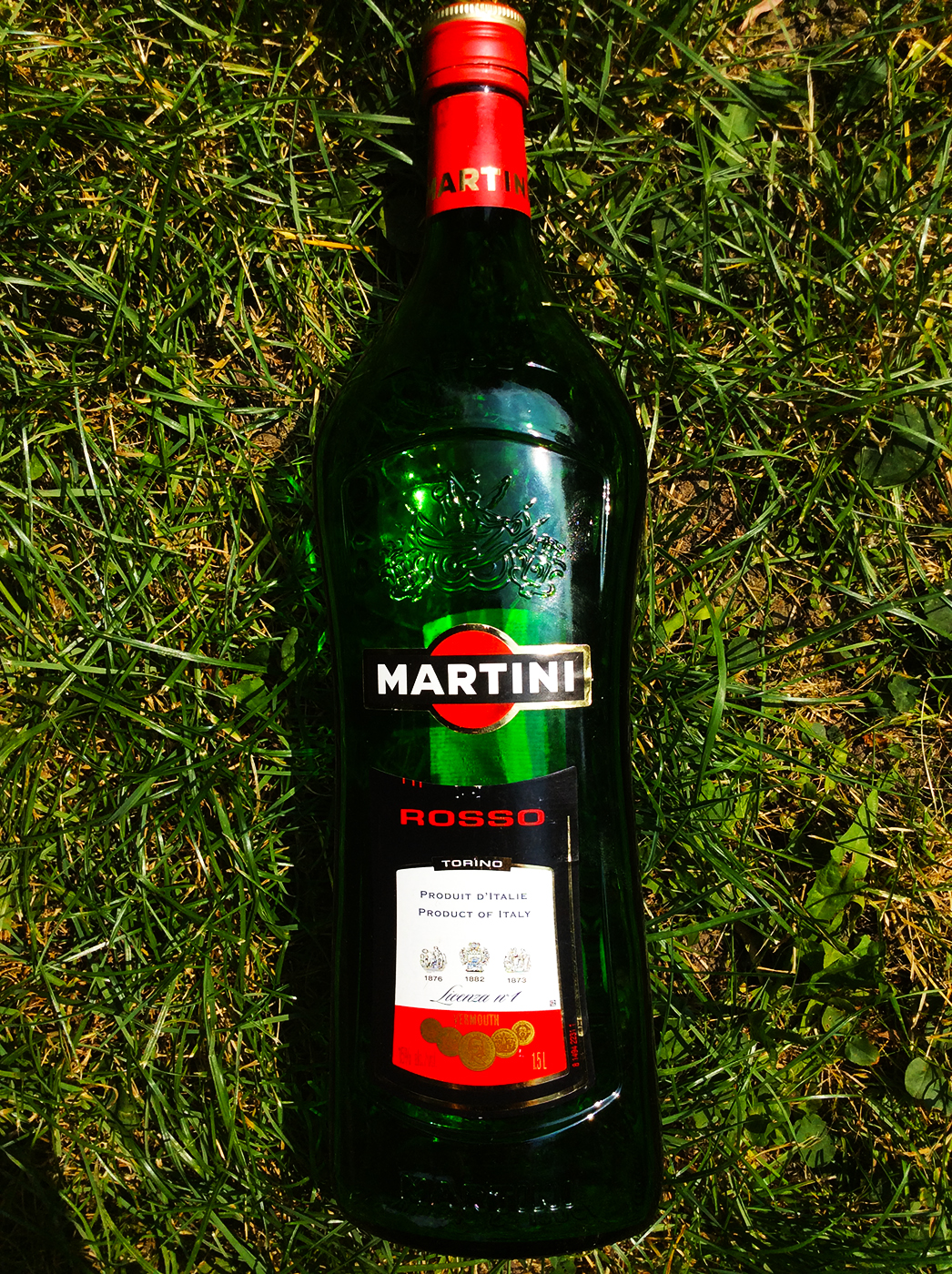

All this is very nice I hear you say, but what about the americano? As with many things drink related, origins are a bit nebulous.
My long held belief and original understanding, was that the drink was first called the Milano-Torino, after the home cities of its constituent parts, Turin for vermouth and Milan for Campari. The story went that after the First World War, thus during that blasted era of Prohibition, noble experiment my ass, there was an influx of American tourists/veterans/lost generation types that developed a strong liking for this drink, to the point that it was renamed the americano. Some accounts I’ve read suggest this was rather derisive in spirit, others mention it as a tribute. Don’t know, wasn’t there, but sounds simple enough, however…
First there’s no consensus over how the original drink was called, Milano-Torino or Torino-Milano. Then it seems that this drink, at least according to some people, did not have soda water in it and no ice, just Campari and vermouth, making it a completely different beast. One theory holds that the americano was created especially for American tourists because they did not like the bitterness of Campari, another suggests that it is in fact a renamed Milano-Torino, and that it had nothing to do with tourism, but with a 1932 boxing win. Of course all of this may be wrong too, as it appears americano might have been a form of slang simply meaning an american style drink: a cocktail… The bottom line is that we seem to know jackshit, and Jack just left town.
In any case good luck ordering a Torino-Milano or vice-versa by that name today, I think most places will look at you askance and wonder if you’re having a stroke. of course if you get a nod and a smile and the drink starts coming together before you, you’ve struck gold, get ready to make a new friend, though what you’ll end up drinking is a little bit uncertain. If you want an actual americano, it’s best to ask for it by that name.
Pop-culture sidebar, because I’m not just about the Romans, the americano is the first drink ever ordered by James Bond in Fleming’s debut novel Casino Royal. You’re welcome. Of course Bond makes fun of it a little, saying it is the least offensive drink you can get in a Parisian bistro. For reasons unclear to me, this drink gets a bit of a bad rap, but I think it’s mostly from drinkers that measure their manhood in alcoholic strength. I call poppycock, I call balderdash, I even call bullshit. Wise up gentlemen, the americano is a classy drink, a fine drink, one of the perfect take your time in a sunny afternoon drinks. Not every occasion calls for a sledgehammer of alcohol.
Though we have precious few hard facts about this drink, it should not stop you from enjoying it. Also this is one of those drinks that tastes better when you’re dressed sharply. So get some style on, pick a place in the sun that pleases you, sip slowly and enjoy life as it passes by. Cheers.
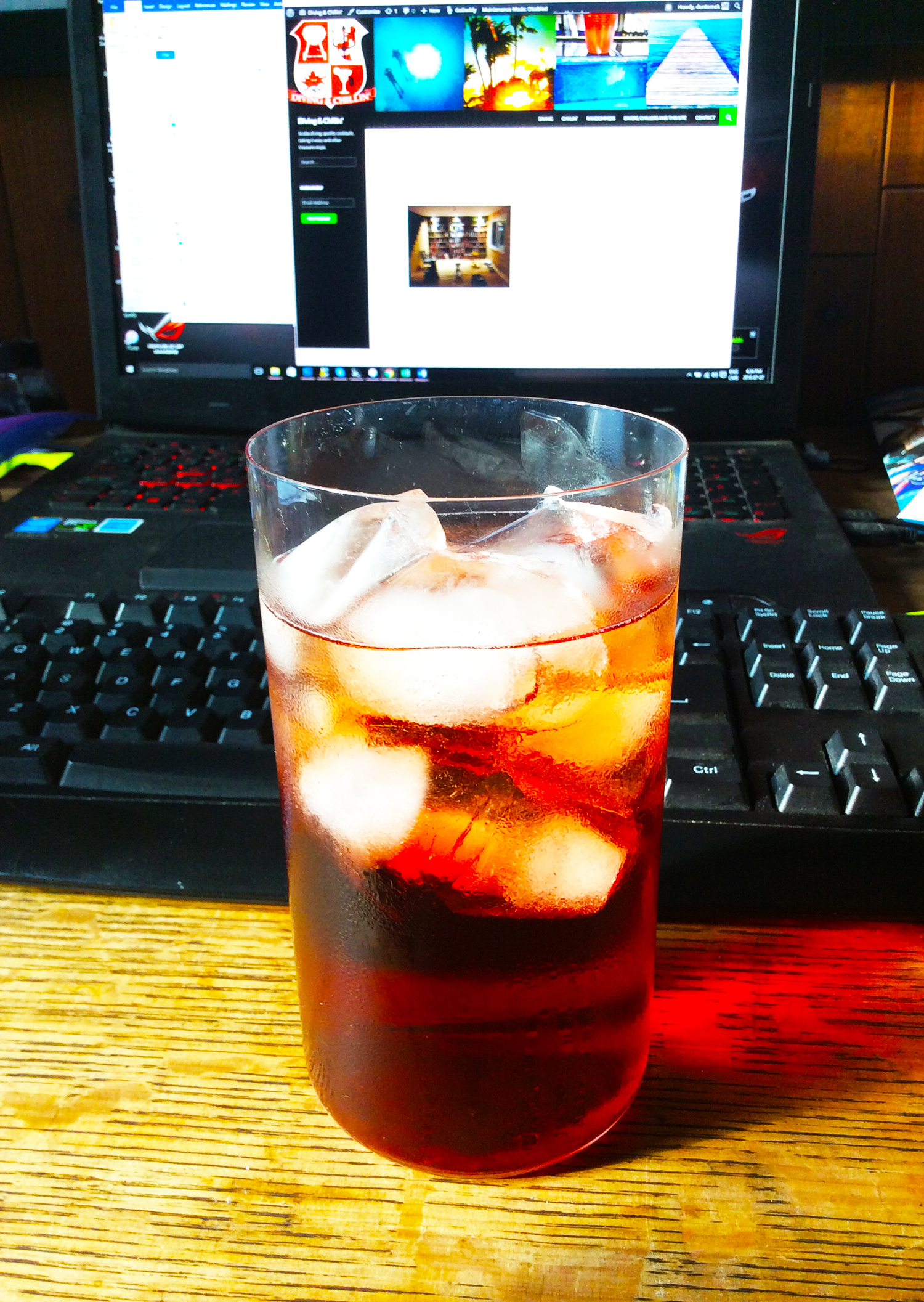
See you soon friends.

This made me thirsty
Then mission accomplished!
Hi! This is actually a Milano-Torino with soda aka Americano.
A Torino-Milano is Campari and Amaro Cora. Which is also extremely delicious.
Very interesting info! Will look into Amaro Cora, unfortunately not a drink we easily find in Canada. Have a very pleasant day Mr. Löwenhamm.